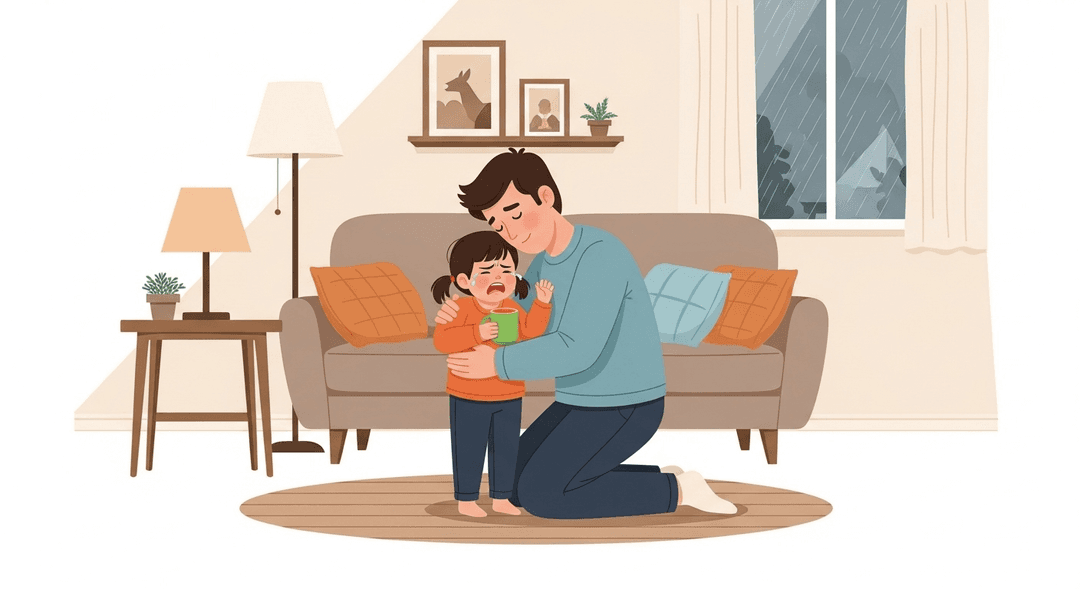Offer Physical Comfort
Ever feel like your kid’s emotional state is a weather app set to ‘stormy’? Sometimes, all you’ve got is your arms (and maybe a sleeve that doubles as a tissue). If you’re wondering whether a hug can fix that meltdown over the wrong color cup—spoiler: it might not, but hey, it’s worth a shot and at least you both get a little oxytocin out of the deal. Plus, it’s the only time you’ll ever be thanked for just standing there doing nothing… except being a human weighted blanket.
Physical comfort, like hugs and gentle touch, floods both your brains with oxytocin—the ‘feel good’ hormone—helping everyone calm down. For kids, it’s like hitting the emotional reset button, reinforcing that the world isn’t ending just because the dinosaur shirt is dirty. For parents, it’s a tiny reminder you’re not totally failing at this gig, and your nervous system gets a mini-vacation from the chaos.
How to do it
-
Get down to your child’s level. Kneel, squat, or do whatever works to make eye contact—bonus points for adding a dramatic sigh to show empathy.
-
Open your arms and ask if they want a hug. Always ask first; getting consent builds trust.
-
If they say yes, give a real hug: gentle and firm, but not so tight it feels like you’re crushing a watermelon.
-
If they’re not into hugs, try offering a comforting touch instead, like placing a hand on their back or gently squeezing their hand.
-
Stay together for a few slow breaths. When it feels right, release and let your child decide when to move on.
-
Repeat as needed, especially after banana-related crises or other everyday upsets.
Tips:
- Always respect your child’s boundaries and preferences for physical affection.
- Use calm, reassuring body language.
- Remember, sometimes just being present is enough.
